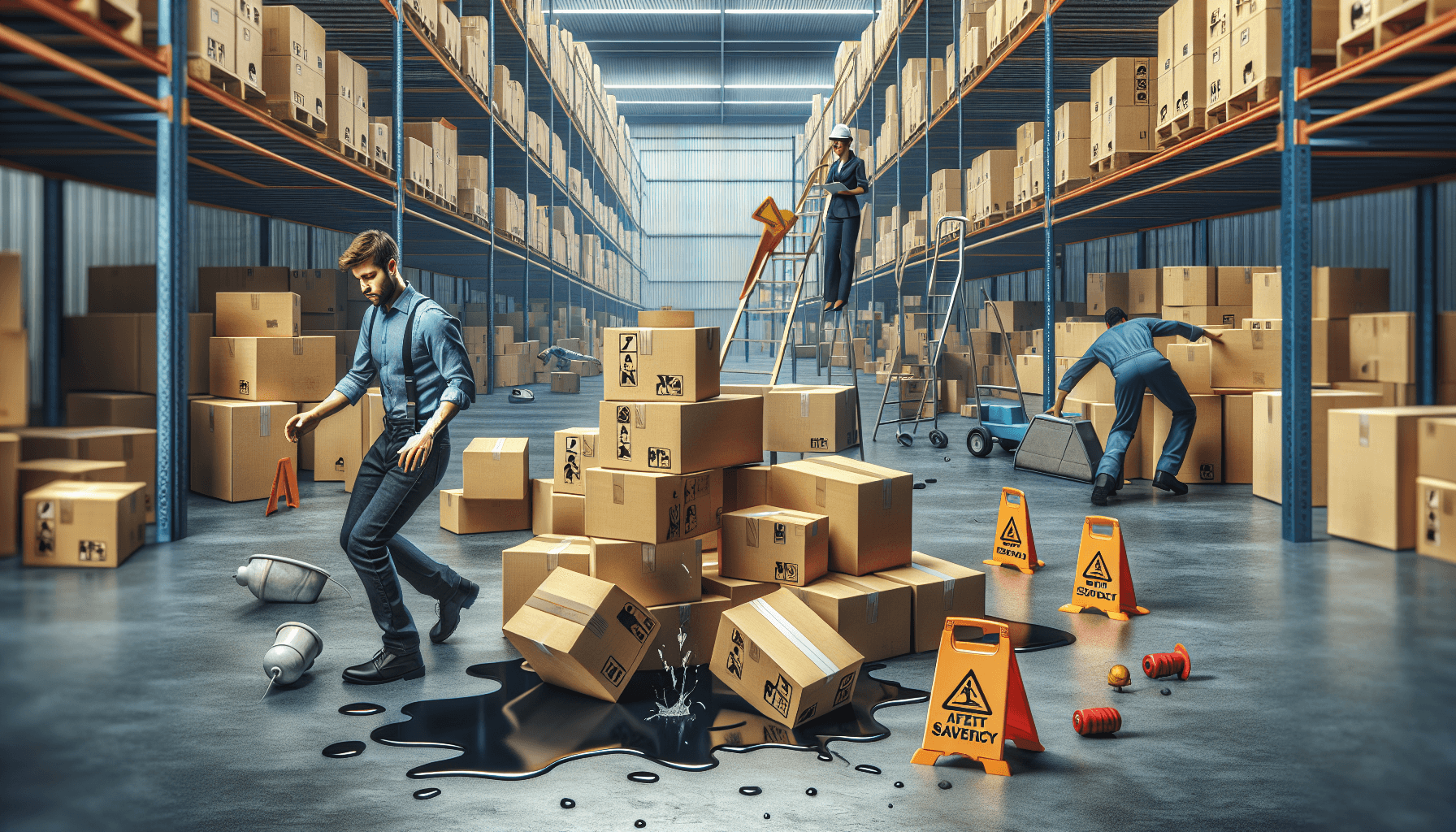Warehouses are essential for storing and managing inventory in various industries. However, they can also pose several hazards if safety measures are not properly implemented. It is crucial for warehouse operators and employees to be aware of these hazards and know how to identify them to ensure a safe working environment. In this article, we will explore some common warehouse hazards and provide insights on how to effectively identify and mitigate them.
1. Slips, Trips, and Falls
Slips, trips, and falls are the most common hazards in any workplace, including warehouses. They can occur due to slippery surfaces, cluttered aisles, uneven floors, or inadequate lighting.
To identify potential slip, trip, and fall hazards in your warehouse, regularly inspect the premises. Look for any spills, wet surfaces, loose cords, debris, or damaged flooring. Ensure that all floors are clean, dry, and well-maintained. Implement proper signage to alert employees and visitors of potential dangers.
Additionally, provide training to employees on proper housekeeping practices, such as keeping walkways clear, promptly cleaning up spills, and reporting any hazards they come across.
If you identify any slip, trip, and fall hazards, take immediate action to remedy the situation. Repair damaged floors, install anti-slip flooring, and provide adequate lighting in all areas of the warehouse.
2. Forklift Accidents
Forklifts are essential equipment in warehouses for lifting and moving heavy loads. However, they can also be involved in accidents if not operated safely.
To identify potential forklift hazards, ensure that all forklift operators are properly trained and licensed. Regularly inspect forklifts for any maintenance issues or malfunctions. Look for proper positioning of loads and secure them to prevent shifting or falling during transportation.
Implement clear traffic management systems, such as separate pedestrian walkways and forklift lanes. Use floor markings and signs to indicate the designated routes for forklifts and separate areas for pedestrians.
Encourage employees to report any near-misses or unsafe use of forklifts. Conduct regular safety meetings or toolbox talks to reinforce safe forklift operating practices.
Remember, prevention is key in mitigating forklift accidents. Implement regular maintenance schedules, provide ongoing training to forklift operators, and enforce strict adherence to safety protocols.
3. Falling Objects
In warehouses, there is a risk of objects falling from shelves, racks, or overhead storage. These falling objects can cause serious injuries to employees.
Regularly inspect the condition of shelving units, racks, and overhead storage systems. Look for signs of damage, such as bent or cracked beams, loose bolts, or overloaded shelves.
Implement proper storage procedures, including stacking items securely, using safety nets or barriers, and avoiding overloading shelves or racks. Train employees on safe handling techniques and teach them how to stack and organize materials properly.
If you notice any potential falling object hazards, take immediate action to repair or replace damaged storage equipment. Conduct regular safety inspections to ensure ongoing compliance with safe storage practices.
4. Hazardous Materials
Warehouses often store and handle hazardous materials, such as chemicals, flammable liquids, or toxic substances. Failure to handle these materials properly can result in severe injuries or environmental damage.
To identify potential hazardous material hazards, ensure that all hazardous materials are properly labeled and stored according to safety regulations. Conduct regular inspections to check for leaks, spills, or damaged containers.
Provide appropriate personal protective equipment (PPE) to employees who handle hazardous materials and ensure they are trained in their proper use. Implement procedures for safe handling, storage, and disposal of hazardous materials.
Regularly review and update your hazardous materials management protocols to stay in compliance with regulations and industry best practices.
5. Ergonomic Hazards
Ergonomic hazards in warehouses can arise from improper lifting, carrying, or repetitive motions. These hazards can result in musculoskeletal disorders and long-term health issues for employees.
To identify ergonomic hazards, observe employees’ work practices and look out for any awkward postures, repetitive motions, or excessive force during manual lifting or carrying tasks. Pay attention to workstations, tools, and equipment to ensure they are ergonomically designed.
Provide proper training on ergonomic techniques, such as safe lifting and carrying practices, and encourage employees to take regular breaks to reduce the risk of overexertion.
Incorporate ergonomics into the warehouse layout and design. Provide adjustable workstations, ergonomic tools, and equipment to minimize stress and strain on employees’ bodies.
Regularly evaluate and update your ergonomic practices based on feedback from employees and the latest ergonomic guidelines.
By proactively identifying and mitigating these common warehouse hazards, you can create a safer working environment for your employees and reduce the risk of accidents and injuries. Remember to periodically review and update your safety protocols, provide ongoing training, and encourage a culture of safety within your warehouse.
For a comprehensive evaluation of your warehouse safety and to identify potential hazards, consider consulting with experts like HCO Innovations. They specialize in warehouse safety solutions and can provide tailored recommendations to enhance the safety of your warehouse operations.

